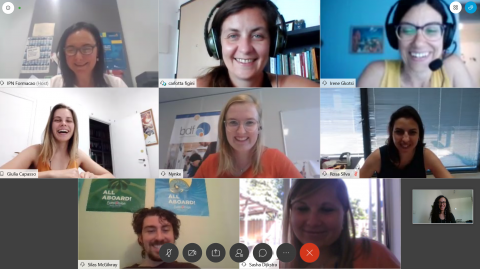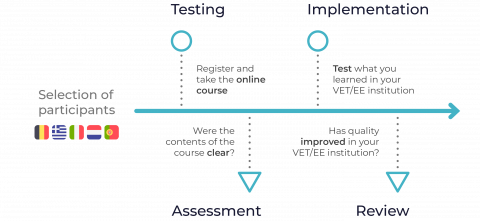4.2 - Learners’ feedback – teaching environment
Abstract
As a Quality Manager you should be aware that students will be more motivated to learn in a
teaching environment that meets their needs and thus, it is important to obtain feedback from
students about the teaching environment. This needs to be done regularly, preferably every three
months and should consider all details of the teaching environment. Eventually, this might contribute
to the participation and completion rates in VET programmes.
Why is this important for you as a QM?
- To contribute to the learning process of the students through the improvement of the teaching environment;
- To physically change the learning environment in order to make the learning process of the students better;
- To make sure students are more motivated to learn in a teaching environment that meets their needs regarding learning;
- To attract more potential students.
How should I implement the action?
- When asking for feedback from students about the teaching environment, don’t forget to involve these aspects: physical surroundings, psychosocial or emotional components, social, and cultural influences that exist in a learning situation;
- Don’t forget to include the use of (digital) tools in the classroom;
- When composing a survey to collect feedback from students about the teaching environment, try to think of questions really relevant for the student experience of the teaching environment, put yourself in students’ shoes;
- Consider evaluating even the smallest details of the teaching environment, for example:
- Does the teaching room need to be closed or open?
- What is the experience of mobile, connected, visual, supportive technology?
- Does the teaching environment need a fixed set-up (decided by the teacher) or do the students need to decide on the environment set-up themselves?
- For the teaching environment set-up, it could help to show the students pictures/drawings of different set-ups and let them assess the best set-ups for certain learning situations;
- Ask for feedback regularly, anonymously and preferably every three months.
How should I know if I have made impact thus increasing the quality of the VET provision and to which extent? (Indicators also linked with the EQAVET if any):
- If you assess how the students feel about their teaching environment, it may contribute to the participation rate in your institution’s VET programmes (with an increase of at least 10% for successful implementation results after a year), as students will spread the word that the teaching environment is an important issue in your institution and that actions will be taken to improve the teaching environment when needed, based on their feedback;
- If you ask for feedback on the teaching environment, it may contribute to the completion rate in your institution’s VET programmes, as students will be more motivated to complete a VET programme with a teaching environment adapted to their feedback and thus, their needs. The completion rate needs to be increased by at least 10% after a year.
Links & further readings (includes also third-party resources- videos, etc.):
- Barker, L. J. & Garvin-Doxas, K. (2004). Making visible the behaviors that influence learning environment: A qualitative exploration of computer science classrooms. Computer Science Education, 14, 2, 119-145.
- Cleveland, B. & Fisher, K. (2014). The evaluation of physical learning environments: A critical review of the literature, 17, 1-28.
- Dorman, J. P., Adams, J. E. & Ferguson, J. M. (2002). Psychosocial environment and student self-handicapping in secondary school mathematics classes: A cross-national study. Educational Psychology, 22, 5, 499-511.
- Faulkner, J. K., Bradley, K. D., Lumpp, J. K. & Bradley, J. W. Broadening the Roles of School Psychologists through an Evaluation of Learning Environments: A Pilot Study, 1-20.
- IN-QUAL project’s Common Reference Framework, chapter 2. Standard principals and indicators of entrepreneurship education providers.
- IN-QUAL project’s Guidelines, G 4 – Include feedback into daily practices and procedures
- GW University Teaching & Learning Center (n.d.). Sample Questions for Getting Feedback from Students.
- Ozay, E., Kaya, E. & Sezek, F. (2004). Application of questionnaire to describe teacher communication behaviour and its association with students in science in turkey. Journal of Baltic Science Education, 2, 6, 15-21.



